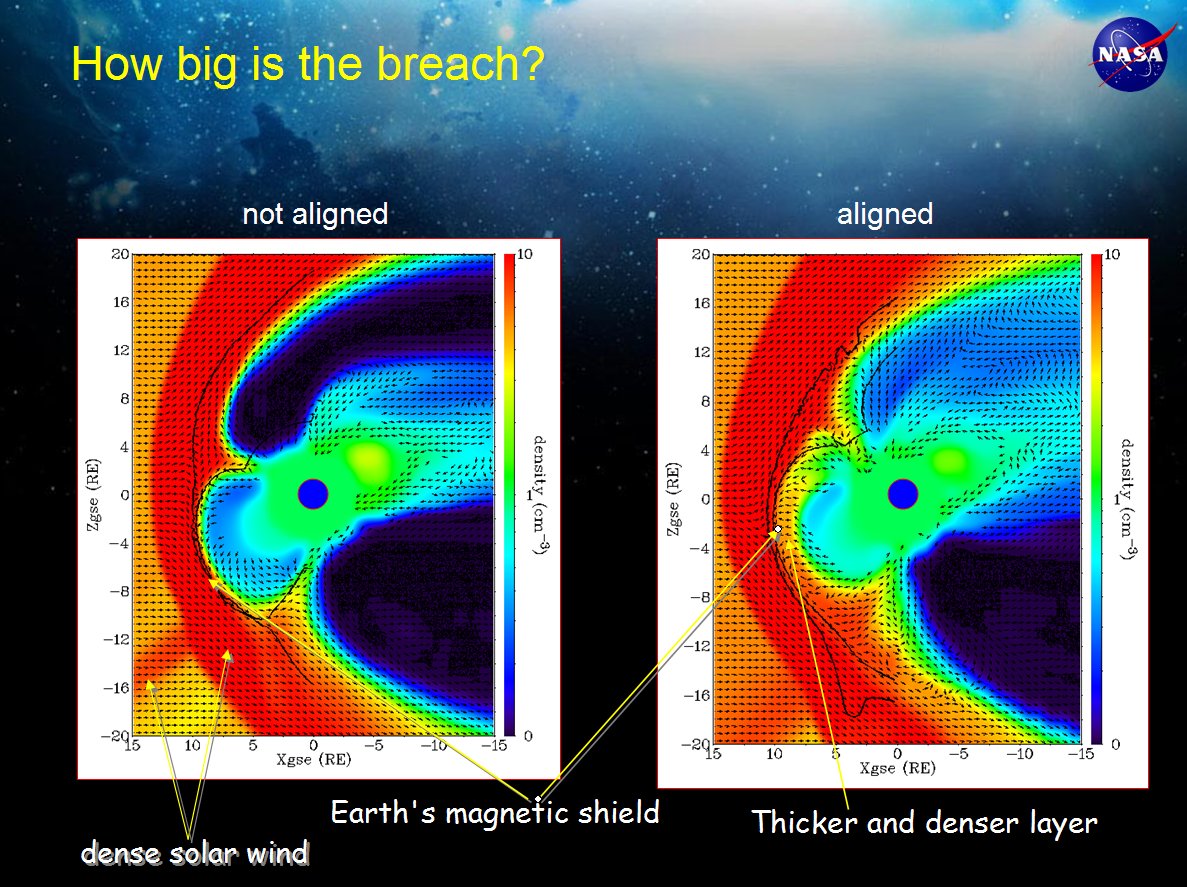From analyzing data from the GRAPES-3 muon telescope in Ooty, India, experts have concluded that the magnetosphere has come under such heavy bombardment in recent years that it weakening.
On June 22, 2015, there was a massive burst of galactic cosmic rays which traumatized the Earth’s magnetic shield for two hours.
Roughly 40 hours before the Earth was bombarded by cosmic rays, the sun ejected a giant cloud of plasma which caused high energy radiation to strike the Earth’s magnetosphere at 2.5 million kilometers per hour.
The storm wreaked havoc on technology with radio signal blackouts reported in North and South America.
However, it is not until now that scientists have been able to understand the full extent of the damage caused by the storm.
Experts from the Tata Institute of Fundamental Research in India ran several simulations based on the data from the telescope and found that the magnetosphere had been cracked for a little while on the day.
Worryingly, the bombardment was so intense the magnetosphere was forced to shrink from 11 to four times the Earth’s radius.
While small amounts of radiation would have little effect on life on Earth, prolonged exposure to higher amounts of radiation can lead to cancer.
The team say in their research published in Physical Review Letters that the storm was so powerful that it managed to “reconfigure” the magnetic shield and opening small cracks in Earth’s first line of defense.
Above: A computer model of solar wind flowing around Earth's magnetic field on June 3, 2007. Background colors represent solar wind density; red is high density, blue is low. Solid black lines trace the outer boundaries of Earth's magnetic field. Note the layer of relatively dense material beneath the tips of the white arrows; that is solar wind entering Earth's magnetic field through the breach. Credit: Jimmy Raeder/UNH. [larger image]
This has dangerous implications for the future, the team says.
They write: "The occurrence of this burst also implies a two-hour weakening of Earth’s protective magnetic shield during this event. [This] indicates a transient weakening of Earth’s magnetic shield, and may hold clues for a better understanding of future superstorms that could cripple modern technological infrastructure on Earth, and endanger the lives of the astronauts in space."
First Image: The magnetosphere protects Earth from cosmic rays


